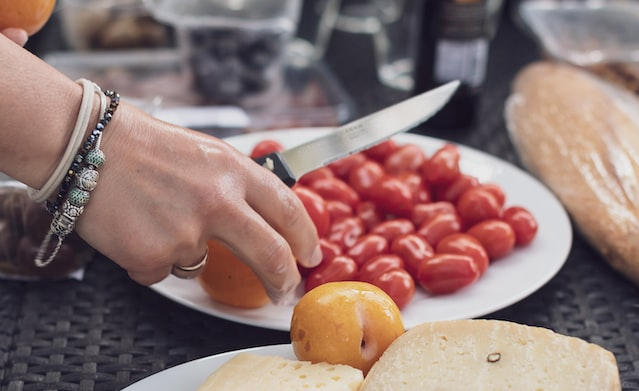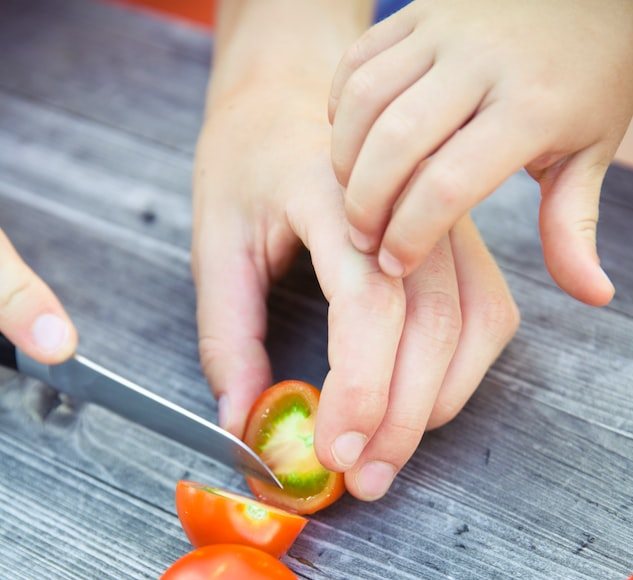If you’re on this post, you probably want to know how you find the best knives, and a part of having smaller hands is choosing a specific type of knife. Knives are essential household items that are also prone to accidents. Choosing the wrong type of knife for your hands can lead to injuries. This is why you need to be careful in choosing the right type of knife suitable for you. And in this article, we’ll reveal the various types of knives for small hands. Keep reading to know more!
Why Is A Good Knife Important?

The right kitchen knife can make all the difference when it comes to preparing food. Using the right knife means you can chop and slice your ingredients more efficiently, which means less time spent on preparation and more time to enjoy your meal!
A quality knife set will also aid in your safety while cooking. We want a knife that will be effective, which means it must be sharp. It seems obvious that if your knives are duller than they should be, there is a higher likelihood that they will accidentally fall out of your hands and hit on you or someone else in an unfavorable location. Cutting with dull blades requires greater force, which raises the risk of hand injuries including cuts and punctures.
Finally, having proper kitchen knives helps ensure presentation quality in dishes, making them look as appealing as possible so people want to eat them! This application is especially useful for chefs who want their customers to come back again and again without losing any business because their food doesn’t look appetizing enough (or worse yet: isn’t cooked correctly).
Tips For Small Hands To Cut Easily
Cutting food with small hands is a challenge. It can be frustrating and messy. It can be difficult to cut food and you may have heard that a sharp knife will make things easier, but this isn’t always true. If your grip is too weak, even a sharp knife can slip out of your hand and cut more than what it was supposed to. Some people use a large cutting board as an aid to help them keep their hands steady while cutting.
However, if you want something smaller that won’t take up so much space in the kitchen or on the table during dinner parties, there are other options available: so here are some tips to make it easier!
🟪 Mark your cutting board
You’re going to need a sturdy, flat cutting board. If you have a nice big one, that’s great! But if you don’t, try marking the surface with a grid so it’s easier to see where each piece of food should be. You can do this with a permanent marker or with masking tape. Just make sure that when you remove it later, there are no sticky spots on your countertop.
🟪 Hold the knife properly
When you’re cutting, hold the knife properly. Make sure that the blade of the knife is flat against the cutting board, and use your other hand to hold the food in place. Keep your fingers away from the blade, and do not use a knife that is too big for you!
🟪 Slice directly through the food
As you slice through food, keep the knife moving in a straight line. Don’t saw and don’t lift the knife and reposition it in order to get a better angle on the food. Cutting at an angle will make it harder for small hands to control their knives, which can result in unnecessary cuts or even dropping knives altogether!
🟪 Use a hinged tool for the fine cuts
When you need to make fine cuts with your scissors, you may want to try using a tool with a hinge. The advantage of this type of tool is that it allows you to make fine cuts by hand instead of using a cutting machine.
In order for it to work well, however, the tool should have several features:
- A comfortable handle that fits well in your hand and makes it easy for you to grasp. It should not be too small or too large for your hands. If necessary, adjust the size of the handle by adding tape or rubber bands around it until it feels right.
- An edge that is sharp enough so that nothing will get stuck on it while making an incision but also not so sharp that pieces fall off while using them on paper (which could cause injury). To ensure this balance between ease-of-use and safety measures is met without sacrificing quality performance overall then consider investing in one which has been professionally sharpened before purchase.
The last tip that you must remember to cut effortlessly is to choose the right type of knife for your small hands. Check the next section what kind of knife is suitable for you.
Types Of Knives For Small Hands

Types of knives for tiny hands are very different from those used by professional chefs. You should be able to easily handle the knife and it should feel comfortable to hold and use. If they are too big or heavy, they won’t be a good fit for you. Here are some types of knives that may be suitable for small hands:
🟪 Santoku knife
This is a Japanese knife and its blade has a length of 150mm or 180mm, which is shorter than most chef knives. It is usually much lighter than other types of chef’s knives and can therefore be held easier by smaller hands.
For more details about Santoku, click here.
🟪 Paring knife
Paring knives are best suited for small hands. They are used for peeling and slicing fruit, vegetables, and boning. Paring knives have a pointed stainless steel tip and a straight edge that allows you to cut small items such as apples or oranges. The blade length is between 8cm and 12cm.
They can be used in any kitchen at home but they’re also great to carry around with you when going camping or even on holiday because they don’t take up much space in your bag or pocket!
🟪 Boning knife
The blades on boning knives are thin, flexible, and pointed at one end. The tips make them easy to control as you slice through tough flesh and bone in order to remove them from your meat or fish. Due to their narrow blade length, they can also be used for cutting around joints on poultry or other small game animals.
Boning knives usually have stainless steel blades that are about 3 inches long (7 centimeters), which makes them ideal for small hands. They come in either straight edge (unsharpened) form or serrated (sharpened) form. Both styles have advantages depending on what type of cuts you’re making during your cooking project!
🟪 Bread knife
You can use a bread knife if you have small hands. The length of the blade of 180mm is between 15 and 20cm, so it’s ideal for slicing bread, cakes, and pies. The blade is made of high-carbon steel, which means that it’s strong enough to cut through hard crusts as you’d find on French bread or baguettes.
For certain types of bread (especially sourdough), the best thing to do is slice it into even vertical slices first before cutting each piece into smaller pieces horizontally.
🟪 Chef’s knife
A chef’s knife can range in length from 6 inches to 1 foot. The most flexible sort of chef’s knife has a length of 9 inches, which enables little hands to comfortably mince herbs or garlic or chop, cut, and slice vegetables.
What You Need To Consider When Buying Knives For Small Hands
When choosing a knife for small hands, you must consider several factors. The most important is the handle of the blade. If it is too big, it will be uncomfortable to hold and use. You should also make sure that the blade is sharp and made of high-quality steel. It must have some weight to it so that it feels comfortable in your hand while you are using it. Also when buying knives for small hands, look at how well-balanced they are because this will affect how easy they are to use as well as how safe they will be when using them around children or pets.
Final Words
In conclusion, using the right type of knife for your small hands is the first step to using it effectively. Whatever knife you decide to buy, your main concern is going to be its size of it. When you have the right set, the work goes faster and easier.
Hopefully, the question in your mind has been answered with the help of this guide. With the right tools and practice, you’ll be confident to do the greatest cut in your kitchen.
